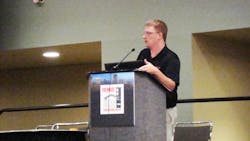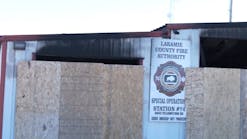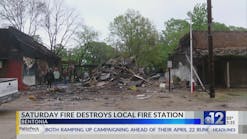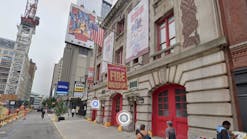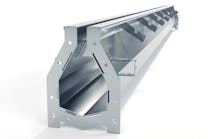BALTIMORE, Md. – Is it OK to have a urinal in a co-ed bathroom? Where should lactating women store their breast milk? What should departments do to accommodate women who might not appreciate using a shower left filthy by her male counterpart?
They’re all good questions that are only going to continue to be more relevant as more women join the ranks in the fire service and all have effects on station design now and in the future.
Robert Manns, the principal architect with Manns Woodward Studios in White Marsh, Md., provided answers to some of those burning questions in a class called “Gender Neutral Fire Stations,” at the Station Design Conference at Firehouse Expo.
Manns said the number of sexual harassment cases filed against fire departments by female firefighters is “just astounding” and totally unnecessary. Departments can avoid many of them by just accommodating women and transgender people who are becoming more steadily involved in the fire service year after year after year.
“It doesn’t matter if you’re black, white, Chinese, male, female,” Manns said. “It just doesn’t matter. You’re firefighters and paramedics and that’s what matters.”
Next to the apparatus bay, most of a fire station is dedicated to spaces for living, sleeping and showering, Manns said.
“The heart of the issue is making everyone feel comfortable and safe,” he said.
Manns said women in the fire service is growing at the rate of one percent every year and faster than that in progressive fire departments. That’s why it is an important issue when communities decide to build new fire stations.
Departments can take “a crap shoot,” guess at their female employee count in the future and designate accommodations for 20 female firefighters and 80 males, Manns said. That, however, might not prove accurate and departments could find themselves with a lot of wasted resources as gender specific facilities go unused.
“How do we see into the future,” Manns questioned, adding that communities could end up spending lots of money to upgrade or modify facilities that are gender specific.
There are four basic ways departments can deal with sleeping facilities and each has benefits and drawbacks, he said.
The first is the traditional large open bunk room, he said. They are cost efficient and don’t take up the least amount of space and are simple to operate. Conversely, they have lousy acoustics, colds and flu can be transmitted easily and they don’t afford much privacy, he said.
Bunk rooms can be co-ed by grouping genders together, he said.
Semi-private rooms with two people in each room offers more privacy, but take up more room and are more expensive, Mann said. They do, however, provide the opportunity for “Jack and Jill” type bathrooms located between sets of bunk rooms.
Private rooms can be expensive with more doors and more floor space, but it avoids a lot of gender issues, Manns said, adding departments have to decide what they can afford and what they need when designing a station.
Making gender accommodations up front can save a lot of hassles in the future and minimize the risk of harassment and related lawsuits.
Locker rooms with shower facilities present unique challenges, Manns said, noting that a typical gang shower won’t work well with different genders and transgender responders using the same facility.
Mann said one option that seems to work and the keeps peace is to have a corridor of showers, each enclosed, but joined by a common area. A certain number can be designated for male and female and that way women, who might not be enthusiastic about using a shower after a man has used it can have one to use of her own. If that’s not available, she might have to use one of the gender neutral showers.
“The regulations are not black and white, in fact, they’re pretty damn gray,” Mann said about locker room facilities.
He said the federal affordable care act will also play a role in the future, especially for nursing mothers. The legislation mandates an uninterruptable space be dedicated for lactating mothers use. He said departments need to think about where that milk is stored too, as the department’s kitchen refrigerator is not the most discrete place to store expressed milk.
Manns said fire departments will need to consider the needs of transgender people as well in the future. As lawsuits are filed requesting equal access, legislation, mandating accommodations, will follow.
The key is to treat all as equals and to try to accommodate as many people as possible when designing stations, Manns said.
And to the question about urinals in co-ed bathrooms – no problem Manns said.
“Most women appreciate them,” Manns said. “There’s less mess. ….We can’t help it. We’re men."
